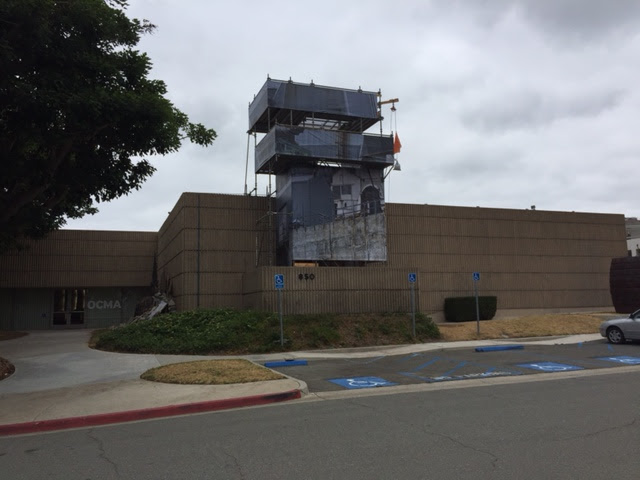Moments and Markers:
An Adolph Rosenblatt Retrospective
Jewish Museum Milwaukee, WI
June 16 – August 27th
Article by Cathy Breslaw
The works of artist Adolph Rosenblatt will be featured in a retrospective at the Jewish Museum Milwaukee in Wisconsin where he resided since 1966. Recently passed away at 83 years of age, Rosenblatt’s exhibition will include paintings, drawings, bronze cast works, ceramic works, sculptural tableaus and large-scale installations. Rosenblatt is best known for his expressionistic painted ceramic figures portrayed in daily life – at a lunch counter, in the bleachers of a baseball stadium, a movie theater, a Chinese restaurant, the Port Authority, an elementary school as well as around a swimming pool in Florida where the artist and his family spent vacations. Having studied under the famous color theorist Josef Albers at Yale, Rosenblatt began his art career as a painter in New York City before becoming a professor at the University of Wisconsin in Milwaukee. Rosenblatt’s flat expressionistic paintings became three-dimensional sculpture when his layers of paint gradually became thicker and thicker until naturally moving the work into the 3-D realm. He once commented:
“My work excites me..I
keep my eyes clear and look a lot, I’m always seeing and making associations….
When we accept things as being ‘everyday’, we avoid them, we no longer see
them…My point is to make myself conscious of them, and to help others become
conscious of them.”
In order to create his work, Rosenblatt had the ‘subjects’
for his work either come to the studio where they sat for him for several hours
at a time, or he went to where they were and sculpted them. He had a very direct and personal approach,
sculpting in clay as his subjects sat, using simple tools, documenting his
response to them in ‘real time’. Rosenblatt’s interpretations of his subjects
resulted in densely rich and intimate gestural and sometimes humorous portraits
with his signature mark-making evident in all these hand-shaped models in clay.
Having begun his sculpture-making in wax casting and bronzes,
he switched to terra cotta clay because of the high costs of
creating bronzes. The ubiquitous accessibility
of clay fit nicely with Rosenblatt’s style of working and subject matter. He wanted to capture moments in time of
everyday people in their own environments. The results included distortions in
the figures, resulting in a mix of reality and fantasy. One of his most
prominent works The Lunch Counter(1987) was inspired by a visit to the tomb of Chin
Qin in China in 1985. The tomb had a sculpture of ceramic foot soldiers and
mounted horsemen guarding the emperor.
Rosenblatt’s The Lunch Counter
included fifty figures in a sculpture thirty feet long. Having taken one year
to complete, Rosenblatt used the site of his daily visit for meals at the
Oriental Pharmacy/Lunch Counter near his studio in Milwaukee. His ‘subjects’ included waitresses and cooks,
as well as regular patrons – artists, business people, folks from all walks of
life who came together to eat, socialize and relax. They each sat for him as he
sculpted their unique poses and gave them life through his energetic hands, as
if channeling his life into their clay images.
He talked about the creation of his work:
“I bring color to my work like a painter brings color. I like bright
colors, the kinds of colors not normally what people put on sculptures. They’re
not supposed to be pretty. The colors are the aura I experience…I don’t do
look-alike sculptures. I do feel-alike sculptures. With color, I tried to
create the sensation I felt and experienced with each person.” (comments made by Rosenblatt on sculptures
of children, Milwaukee’s Anderson Arts Center)1995
Whether he was making paintings on-site in the woods, or
creating figurative sculptures in communications with subjects as they sat,
Rosenblatt’s works emanate an energy and dynamism that came from his heart and
soul. Rosenblatt’s work can be found in
private and public collections including the Library of Congress, Lester Avnet
Collection, Vincent Price Collection, Williamstown Museum and the Milwaukee Art
Museum. He was the recipient of the Wisconsin Visual Art Achievement Award in
2013.
Video about Oriental Pharmacy/Lunch Counter 1987
 |
| Oriental Pharmacy/Lunch Counter (detail) 1987 |
 |
| Oriental Pharmacy/Lunch Counter (detail) 1987 |













